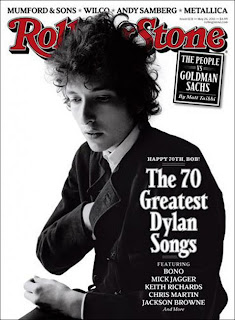Looking back at your preliminary task what do you feel you have learnt in the progression from that to your full product?
I have learnt a lot about the media industry during the construction of my magazine. I have learnt about the level of work that goes into making a music magazine and I have learnt that different camera angles can give off different vibes. For example if the model appears uncomfortable in the photograph it makes the product appear uncomfortable and unwelcoming which will not attract an audience. I have learnt that photography is an essential part of creating a music magazine and that it is ‘key’ to building up the tone of the magazine. For example black and white photographs give more of an edge to magazines than colour photographs. I have learnt that you must experiment with photographs in different filters to discover which one works best for the tone you are trying to create. I have also learnt that the facial expressions of the models used in the photographs must be friendly and invitational otherwise it puts the reader off wanting to look at your magazine. Body posture has the same effect; if the model has negative posture the reader will more than likely not want to read the text.
The layout is just as important. If a text is set out in a complicated or messy way it puts the reader off therefore it is essential that the layout of a media text is clear and easy to follow. This links in with the use of fonts; if the font in a text is hard to read the chances are that the target audience will not bother to read it and will opt for something more appealing to the eye. Fonts like “Arial”, “Tahoma” and “Calibri” are good to use as they are used by a number of different media texts already meaning that they are easily recognisable. If something appears familiar people will feel more comfortable reading it. For example, the majority of society have a profile on Facebook which uses “Tahoma” so if a media text online was to use the same font the chances are that more people would read it because it would already feel familiar to them.
I went through many different stages during the construction of my media product and received constructive criticism from my peers (see blog post on feedback from my class). This criticism has helped me to shape my product to suit the preferred specifications of those who fall into my target audience age group. I have also progressed through my research into numerous different music magazines as I gained a wider technical vocabulary that I was able to incorporate into my own article.
The layout is just as important. If a text is set out in a complicated or messy way it puts the reader off therefore it is essential that the layout of a media text is clear and easy to follow. This links in with the use of fonts; if the font in a text is hard to read the chances are that the target audience will not bother to read it and will opt for something more appealing to the eye. Fonts like “Arial”, “Tahoma” and “Calibri” are good to use as they are used by a number of different media texts already meaning that they are easily recognisable. If something appears familiar people will feel more comfortable reading it. For example, the majority of society have a profile on Facebook which uses “Tahoma” so if a media text online was to use the same font the chances are that more people would read it because it would already feel familiar to them.
I went through many different stages during the construction of my media product and received constructive criticism from my peers (see blog post on feedback from my class). This criticism has helped me to shape my product to suit the preferred specifications of those who fall into my target audience age group. I have also progressed through my research into numerous different music magazines as I gained a wider technical vocabulary that I was able to incorporate into my own article.



